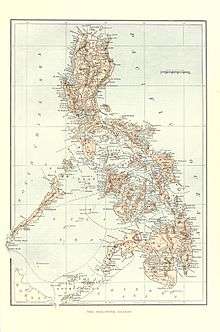Rajahnate of Butuan
| Rajahnate of Butuan | |||||||||||||
|---|---|---|---|---|---|---|---|---|---|---|---|---|---|
| before 1001–1756 | |||||||||||||
| Capital | Centered in modern Butuan City | ||||||||||||
| Common languages | Butuanon,[1] Old Malay, other Visayan languages | ||||||||||||
| Religion | Hinduism, Buddhism and Animism | ||||||||||||
| Government | Monarchy | ||||||||||||
| History | |||||||||||||
• Established | before 1001 | ||||||||||||
• First historical reference by Song dynasty records | 1001 | ||||||||||||
• Subjugated into the Spanish Empire after the last known leader, Rajah Colambu, made a blood compact with Ferdinand Magellan | 1521 | ||||||||||||
• Area conquered by Spain | 1756 | ||||||||||||
| Currency | Piloncitos,[2] Barter rings | ||||||||||||
| |||||||||||||
| Today part of |
| ||||||||||||
The Rajahnate of Butuan (also called as Kingdom of Butuan; Butuanon: Gingharian hong Butuan, Cebuano: Gingharian sa Butuan, Filipino: Kaharian ng Butuan/Karahanan ng Butuan, Chinese: 蒲端國, Púduānguó in Chinese records), was an Indic polity centered on present Mindanao island in the modern city of Butuan in what is now the southern Philippines. It was known for its mining of gold, its gold products and its extensive trade network across the Nusantara area. The kingdom had trading relationships with the ancient civilizations of Japan, China, India, Indonesia, Persia, Cambodia and areas now comprised in Thailand.[3][4]
The balangay (large outrigger boats) that have been found along the east and west banks of the Libertad river (old Agusan River) have revealed much about Butuan's history. As a result, Butuan is considered to have been a major trading port in the Caraga region during the pre-colonial era.[5]
Historiography
Chinese records
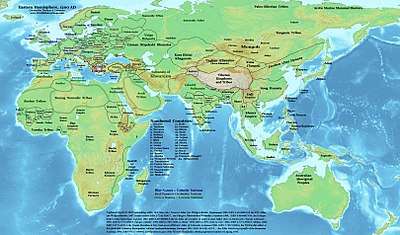
Evidence indicates that Butuan was in contact with the Song dynasty of China by at least 1001 AD. The Chinese annal Song Shih recorded the first appearance of a Butuan tributary mission (Li Yui-han 李竾罕 and Jiaminan) at the Chinese Imperial Court on March 17, 1001 AD and it described Butuan (P'u-tuan) as a small Hindu country with a Buddhist monarchy in the sea that had a regular connection with the Champa kingdom and intermittent contact with China under the Rajah named Kiling.[6] The rajah sent an envoy under I-hsu-han, with a formal memorial requesting equal status in court protocol with the Champa envoy. The request was denied later by the Imperial court, mainly because of favoritism over Champa.[7]
A new ruler with the Indianized name Sri Bata Shaja later succeeded in attaining diplomatic equality with Champa by sending the flamboyant ambassador Likanhsieh. Likanhsieh shocked the Emperor Zhenzong by presenting a memorial engraved on a gold tablet, some white dragon (Bailong 白龍) camphor, Moluccan cloves, and a South Sea slave at the eve of an important ceremonial state sacrifice.[8] This display of irreverence sparked interests from China over the small Rajahnate and the diplomatic relations between the two polities reached its peak during the Yuan dynasty. Chinese records about the Rajahnate stopped after the reign of Rajah Colambu, the last independent Rajah of Butuan. He was formally subjugated into the Spanish Empire after he made a blood compact with Ferdinand Magellan in 1521.
Philippine records
The discovery of the Butuan Ivory Seal proved the theory that pre-colonial Filipinos, or at least in coastal areas, used seals on paper. Before the discovery of the seal, it was only thought that ancient Filipinos used bamboo, metal, bark, and leaves for writing. The presence of paper documents in the classical era of the Philippines is also backed by a research of Otley Beyer stating that Spanish friars 'boasted' about burning ancient Philippine documents with suyat inscriptions, one of the reasons why ancient documents from the Philippines are almost non-existent in present time.[9][10]
Excavated artifacts
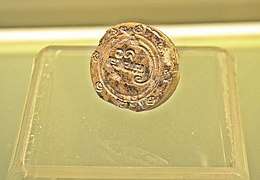
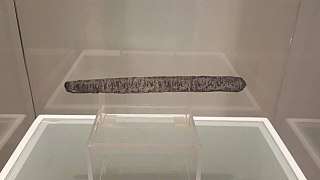
Numerous jars have been found in the Butuan area that indicate the wealth of the kingdom and the existence of foreign traditions.[11] Some of these jars have been dated as follows:
- Sathing Phra (900–1100 AD)
- Haripunjaya (800–900 AD)
- Japanese (12th to 16th centuries AD)[12]
- Chinese (10th to 15th centuries AD)
- Khmer (9th to 10th centuries AD)
- Thai (14th to 15th centuries AD)
- Champa (11th to 13th centuries AD)
- Persian (9th to 10th centuries AD)
Artifacts have been recovered from within the vicinities of Ambangan Archeological Site in Libertad that attest to the historical accounts that Butuan traded with India,[13] Japan, Han Chinese, and Southeast Asian countries during these periods.[14]
Origins of the name
The name Butuan is believed to have existed long before the Spanish conquistadores arrived in the Philippine archipelago. One possible indication of this is a rhinoceros ivory seal with design carved in ancient Javanese or early Kawi script (used around the 10th century CE) which, according to a Dutch scholar, was deciphered as But-wan. Another account suggests the name derives from the word batuan, a mangosteen-related fruit common in Mindanao. Another alternative is that the name derives from Datu Bantuan, possibly a former datu of the region.[15]
Recorded monarchs
| The Royal Title of the Reigning Rajah | Events | From | Until |
|---|---|---|---|
| Datu Bantuan | - | 989 | |
| Rajah Kiling | The Embassy of I-shu-han (李竾罕) | 989 | 1009 |
| Sri Bata Shaja | Mission by Likanhsieh (李于燮) | 1011 | ? |
| Rajah Siagu | Annexation by Ferdinand Magellan | ? | 1521 |
See also
| Pre-Colonial History of the Philippines |
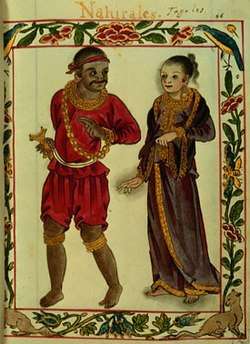 |
|---|
| Barangay government |
| Ten datus of Borneo |
| Legendary |
| Suwarnapumi |
| Chryse |
| Ophir |
| Tawalisi |
| Wāḳwāḳ |
| Sanfotsi |
| Zabang |
| States in Luzon |
| Caboloan (Pangasinan) |
| Ma-i |
| Rajahnate of Maynila |
| Namayan |
| Tondo |
| States in the Visayas |
| Kedatuan of Madja-as |
| Kedatuan of Dapitan |
| Rajahnate of Cebu |
| States in Mindanao |
| Rajahnate of Butuan |
| Sultanate of Sulu |
| Sultanate of Maguindanao |
| Sultanates of Lanao |
| Key figures |
| History of the Philippines |
| Portal: Philippines |
References
- ↑ Fred S. Cabuang (September 6, 2007). "Saving Butuanon language". Archived from the original on August 30, 2008. Retrieved 2009-10-09.
- ↑ http://opinion.inquirer.net/10991/%E2%80%98piloncitos%E2%80%99-and-the-%E2%80%98philippine-golden-age%E2%80%99
- ↑
- ↑ http://whc.unesco.org/en/tentativelists/2071/
- ↑ Lealiz, Sia (February 4, 2009). "Discovering the Ancient Kingdom of Butuan". The Philippine Star. Retrieved 2009-10-09.
- ↑ "Timeline of history". Archived from the original on 2009-11-23. Retrieved 2009-10-09.
- ↑ Scott, William Prehispanic Source Materials: For the Study of Philippine History, p. 66
- ↑ Song Shih Chapter 7 to 8
- ↑ http://paulmorrow.ca/bayeng1.htm
- ↑ https://blogs.brown.edu/alioshabp/some-background-on-baybayin-a-pre-hispanic-filipino-script/
- ↑ Luna, Lillian (2004). MAPEH for Secondary Students. Art Books and History Books. St Bernadette Publications Inc. ISBN 971-621-327-1.
- ↑
- ↑
- ↑
- ↑ "Historic Butuan". Retrieved 2009-10-09.

